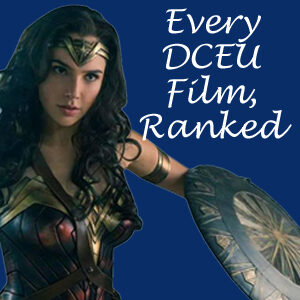If there’s an award for set design successfully mimicking reality, “Borg vs McEnroe” – now available on home video – should win it. I’ve seen the 1980 Wimbledon final on DVD, so I couldn’t help but watch the film’s final act with a technical eye. The art department obviously pored over the footage to re-create the details: the white tennis balls (even though they don’t show up well on screen), the wheelchair seats being practically on the court, the way the players’ chairs are at 90-degree angles to one another. Unfortunately, the film didn’t get a Coke sponsorship, so we miss out on the now-bizarre fact that players drank soda on changeovers.
Equally impressive, Shia LaBeouf (as John McEnroe) and Sverrir Gudnason (as Bjorn Borg) masterfully copy the players’ styles, from the American’s contorted lefty service motion and precision volleys to the Swede’s two-handed backhand and the way he sways like a simian while awaiting a serve. It helps that Gudnason looks exactly like Borg and that LaBeouf – while less of a ringer – capture’s Johnny Mac’s inner fire and vaguely shy downward gaze. After a while, I felt like I was watching McEnroe. Both actors are a decade older than the players were at the time, but it’s not noticeable.
In contrast to the slight Hollywood veneer of last year’s “Battle of the Sexes,” the often-subtitled “Borg vs McEnroe” has an indie feel as director Janus Metz and cinematographer Niels Thastum use filters to capture the style of home video for the flashbacks to the players’ youths (when they are played by younger actors). And the music by four composers sets a contemplative tone that lulls us into dreaming about the 1980 tennis scene.
All of this means nothing without the smart script by Ronnie Sandahl that brings us into the heads of the players. Interspersing the Wimbledon drama with a narrative about their careers to this point, “Borg vs McEnroe” highlights moments that help us understand that McEnroe’s lack of empathy for other humans – umpires, reporters and talk-show hosts – is not borne out of spite. It comes from his own intense focus on tennis and distaste for playing other “games.”
I knew less about Borg and was fascinated to learn that, as a young player, he had just as much anger as McEnroe. In a pivotal scene, his coach, Lennart Bergelin (Stellan Skarsgård), tells him to stop showing his anger on the court and instead channel it into his strokes.
So Borg does, and he’s “Ice Borg” from then on. It reminds me of a revelation from Chris Bowers’ “Federer” that Roger Federer threw rackets as a youth until he realized he disliked his own behavior and decided to stop.
I didn’t know about Borg’s OCD, wherein he requested the same hotel room and rental car for every Wimbledon. The meatiest tidbit about McEnroe is that he draws the Wimbledon bracket in Sharpie on the wood paneling of his hotel-room wall, so he can map out his and Borg’s paths to the final. It’s messier than my 2018 women’s bracket.

Like a lot of tennis fans, I sometimes do the thought experiment of mulling how many Slams Borg would’ve won if he hadn’t retired in his prime in 1981. “Borg vs McEnroe” illustrates that Borg was psychologically burned out after spending his whole career obsessed with being the best in the world. So the answer is zero; while he was still at his physical peak, he was psychologically incapable of adding to his haul of 11 majors once he had relinquished the No. 1 ranking. (This makes me appreciate the second winds in the careers of Federer and Rafael Nadal even more.)
It’s hard to make a docu-drama about well-known people and a well-known event. For a tennis fan, the pleasures are subtle rather than bombastic – including hints even in the match’s wake that both players value the historical importance more than the result. I suspect people less familiar with sporting history might get drawn into the final-act drama more than I did. Still, this is the best tennis movie I’ve seen.

